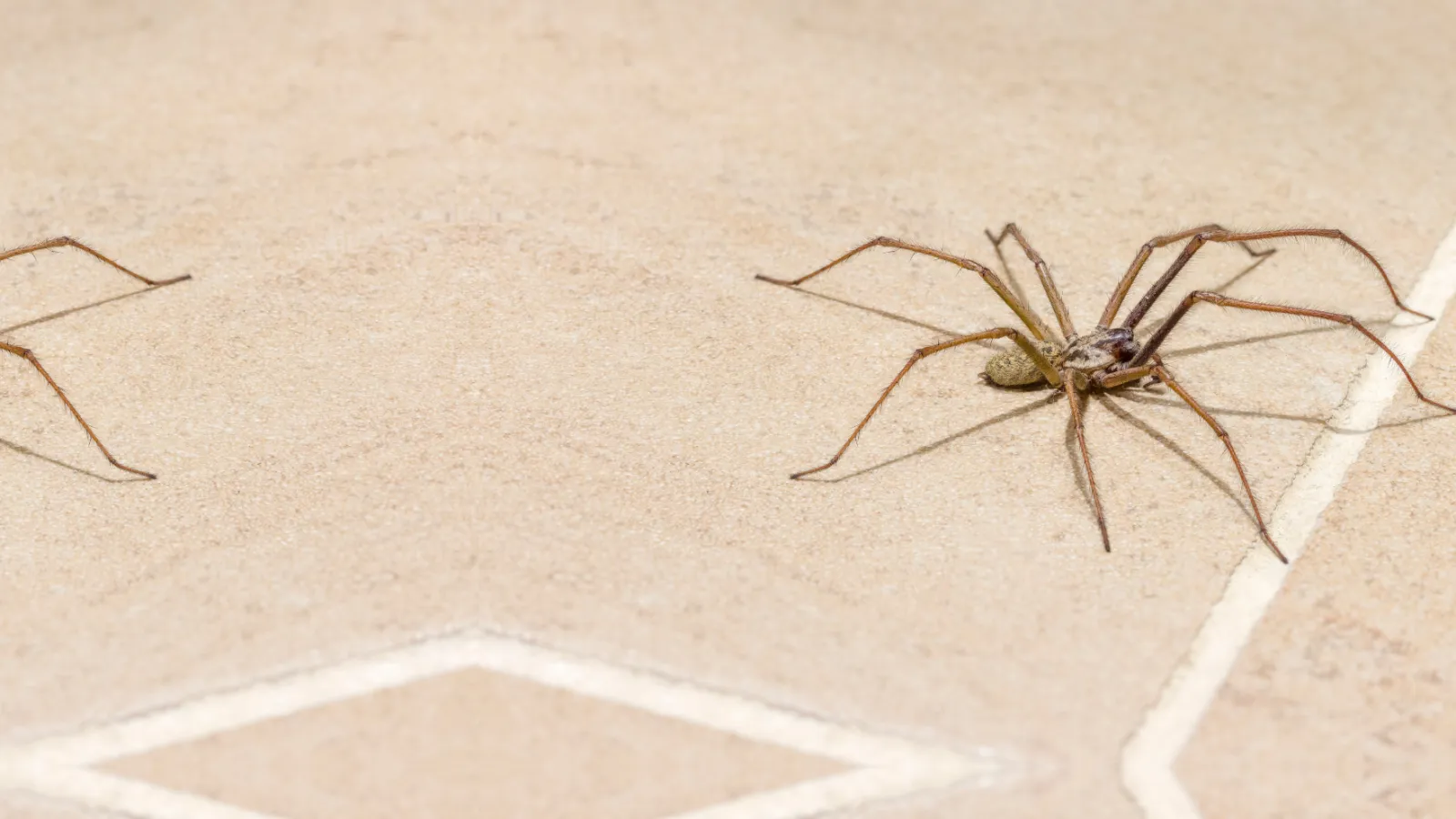
Common Spiders
Latin Name: Parasteatoda tepidariorum
House Spiders (Parasteatoda tepidariorum) are small spiders with bulbous abdomens and variable coloration, often brown, gray, or tan with patterns. They create messy, irregular webs and are typically found in dark, undisturbed areas of homes such as basements, attics, and closets. Feeding primarily on small insects caught in their webs, house spiders are reclusive and generally harmless to humans. These spiders are active year-round indoors, with populations often increasing in late summer and fall as they mature and seek nesting sites.
Wolf Spiders (Family: Lycosidae) are large, robust spiders with hairy bodies, usually brown or gray with darker markings. Unlike web-building spiders, wolf spiders are ground-dwelling hunters that rely on their excellent eyesight to catch prey. They are often found in basements, garages, and outdoor areas like gardens. A distinctive trait of wolf spiders is that females carry their egg sacs and spiderlings on their backs. They are most active during the warmer months, from spring through fall, and may wander indoors in late fall while seeking shelter from cooler weather.
Orb Weavers (Family: Araneidae) are medium to large spiders known for their intricate, circular webs. Common species include the yellow garden spider (Argiope aurantia) and the barn spider (Araneus cavaticus). These spiders spin large, symmetrical webs in gardens, on porches, and near outdoor lights, actively hunting flying insects such as moths and flies. Orb weavers rebuild their webs daily and are non-aggressive and harmless to humans. They are most active from late spring to early fall when insect activity is high. In late fall, females lay egg sacs, and the adults typically die off after the first frost.
Spiders appear in homes and yards for various reasons. House spiders remain indoors year-round due to the consistent environment. Wolf spiders may accidentally wander indoors while hunting prey or seeking shelter in cooler months. Orb weavers are more common outdoors but may build webs near windows, doorways, or porches where flying insects are abundant.
Quarterly pest control can be highly effective in managing spider populations. Regular treatments disrupt spider habitats and reduce insect prey, which attracts spiders into the home. Treating the perimeter of a house can help prevent wandering spiders, such as wolf spiders, from entering. Indoor spot treatments target house spiders in hidden areas, ensuring a comprehensive reduction in spider populations. A proactive approach like this keeps homes spider-free year-round.
